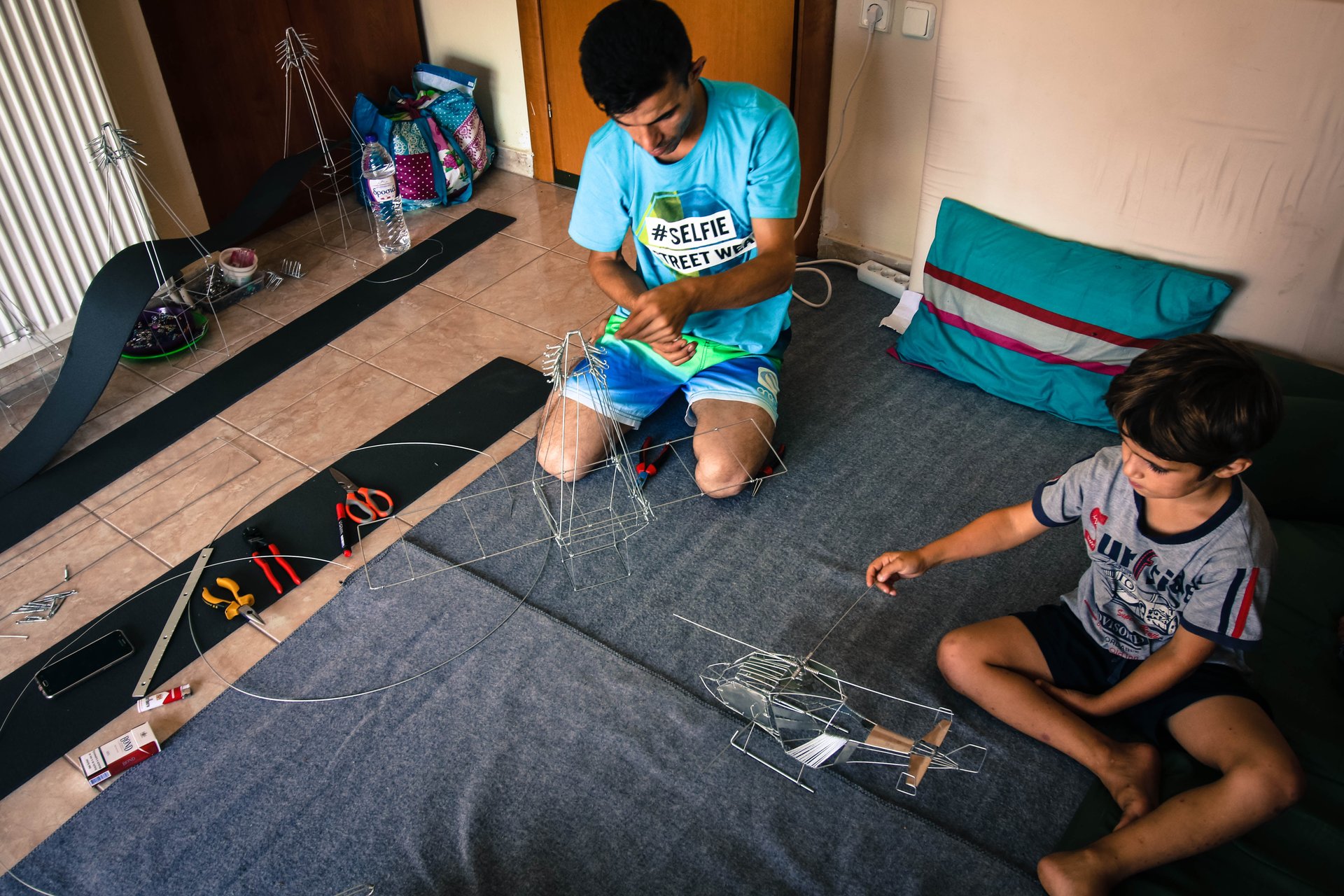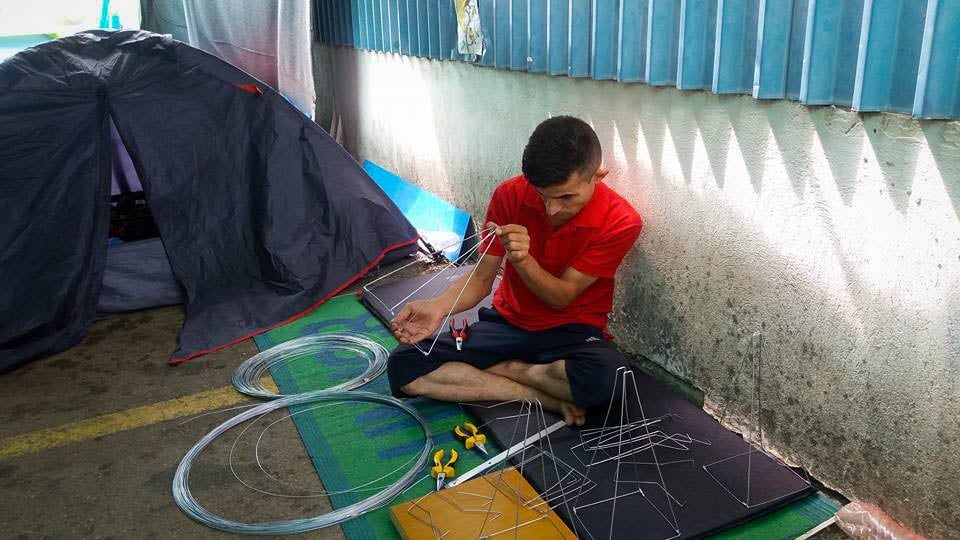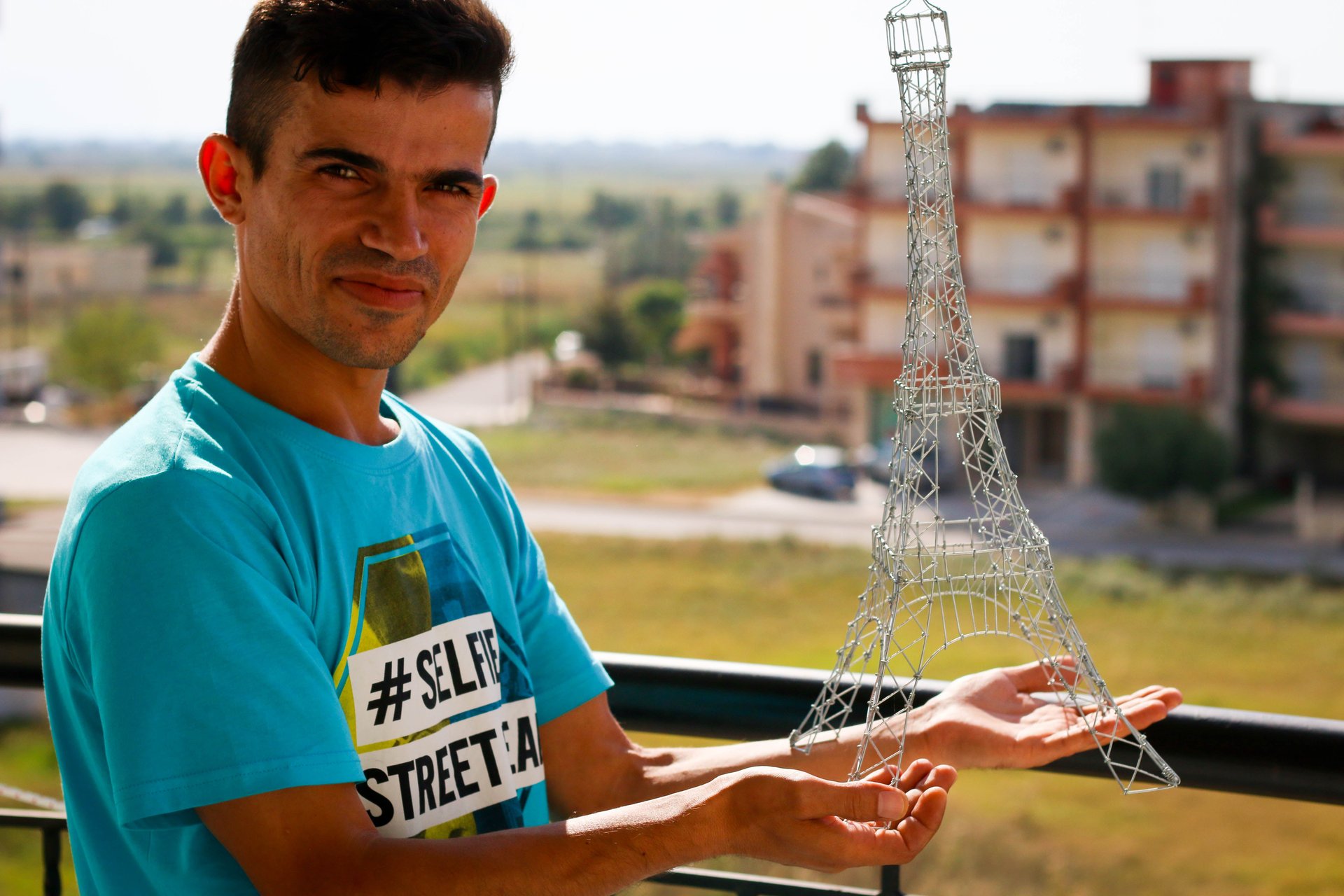A Kurdish refugee is using border fencing to turn memories of war into works of art
Barbed-wire fencing has loomed overhead in each of the three Greek refugee camps where Mahran Jan and his family have lived for the past year. But for Jan, a 32-year-old Kurdish refugee from the northern Syrian town of Afrin, the menacing metal coils are a source of creative inspiration. A factory worker in his past life, Jan recycles spare bits of wire and metal from refugee camps to create lifelike model helicopters and planes, just like the ones that bombed his home.


Barbed-wire fencing has loomed overhead in each of the three Greek refugee camps where Mahran Jan and his family have lived for the past year. But for Jan, a 32-year-old Kurdish refugee from the northern Syrian town of Afrin, the menacing metal coils are a source of creative inspiration. A factory worker in his past life, Jan recycles spare bits of wire and metal from refugee camps to create lifelike model helicopters and planes, just like the ones that bombed his home.
In a small studio apartment outside the Greek port city of Thessaloniki, Jan is twisting steel cable with a pair of pliers. Last week, he moved with his wife and sons from a squalid refugee camp into this modest apartment, sponsored by a German volunteer. Every available surface is stacked with steel wire, gardening tools, and Jan’s unfinished creations.

“When I was a child in Syria, I would collect wire from the streets,” he says, holding up a length of cable no longer than his finger. “With a piece like this, I could make many things. Small bicycles, cars … My mother was always wondering what happened to her clothesline.”
When Syria’s civil war began more than five years ago, the peaceful homeland of Jan’s boyhood gave way to airstrikes and forced military conscription. “I love my country,” he says, “but I was afraid for my sons. We don’t want any part in the war.” Together with his wife and two young sons, in 2014 Jan fled to Turkey, where they struggled to earn money and dodged anti-Kurdish intimidation. After two years, Jan says the family turned their savings over to smugglers who promised them passage to northern Europe.

Unfortunately, the family was a few days too late. They reached the Macedonian border in late February of this year—shivering and nearly penniless—just when it closed to migrants. Instead of traveling onward, they were trapped with thousands other refugees in a makeshift encampment in Idomeni, a border town about 80 kilometers north of Thessaloniki.
Despondent, Jan took to pacing along the hastily constructed border fence. There, beneath the coils of barbed wire, he gathered bits of discarded fencing that littered the frozen ground. Jan brought them back to his tent and started crafting detailed models of Syrian and Russian helicopters, which had become engrained in his memory after hours spent nervously watching the sky in Syria. Delighted volunteers began to offer small sums of money for the models, and soon Jan was receiving orders via Facebook from all over Europe.
“These bombers that were in my nightmares became my source of hope,” Jan says, standing over an 18-inch helicopter model with functional hinged doors, a spinning propeller, and a tail rotor whose tiny rim is made from a soda can. It’s one of more than 150 such models Jan created this year.
Among the people touched by Jan’s work is volunteer Courtney Gillenwater, a Californian pediatrician who treated Jan and his family in Idomeni. Jan thanked her with a homemade wire necklace.
“Mahran made artwork out of the very thing that has the least humanity in the refugee crisis: the fence,” Gillenwater says.

The Jans were eventually connected with their sponsor by a small German NGO, making them one of a lucky few families with a safe place to live. But they are still in limbo, waiting to receive legal asylum-seeker status along with more than 50,000 other refugees in Greece. As Jan waits, dreams of northern Europe have begun to supplant his nightmares of war. In a makeshift workshop in his new home, rows of bicycles, bracelets and model Eiffel Towers are starting to crowd out the miniature bombers.
